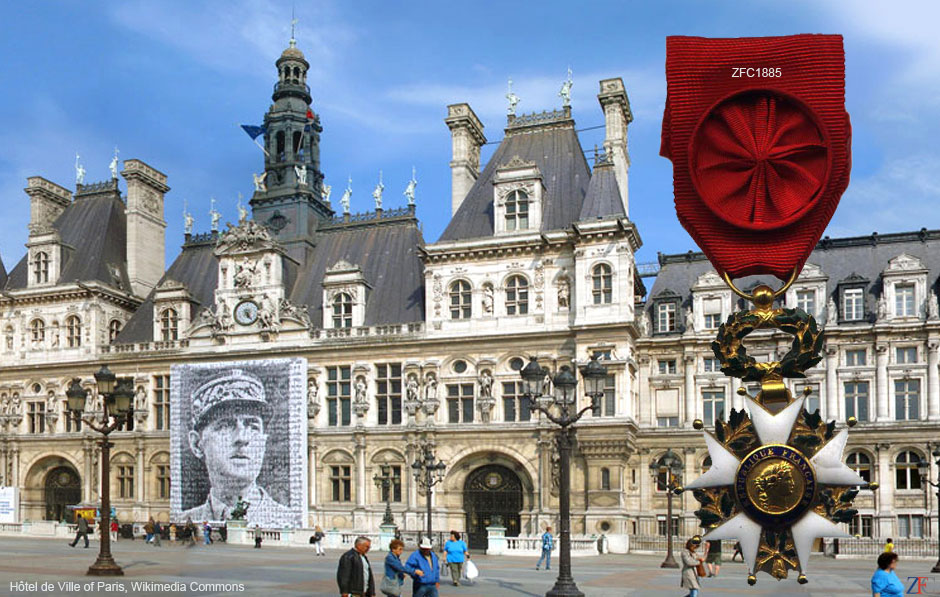69. Capture the Flag

Captured flags capture the imagination! In ancient Greece as well as Rome, many big victories in the military were often formally celebrated with a display of the captured arms along with notable cultural objects that were commonly referred to as war trophies.
During the Middle Ages, the European wars that took place during the 17th and 18th centuries as well as those that happened in the Napoleonic Wars saw armies use alternatives of this honoring procedure, wherein returning armies would regularly display flags that had been captured from the enemy in public buildings as well as in places of worship such as churches.
They would then be placed in a public space as either a morale boosting technique, as an overt symbol of victory or as a notable reminder of a past wartime accomplishments. Alternatively, they would be placed in a church or another place of worship in order to pay respect to their religion for yielding the army with a triumph or as a sign that marks the power of the outside influence of God to their worthy cause.
During the 20th century it was extremely common for soldiers to return to their home with a collection of wartime trophies and souvenirs and these often included an array of enemy flags. During WWII, U.S. soldiers who were returning from both the Pacific and European theaters of war sought the highly-prized Japanese and German flags, which were were plentiful.
While that practice continued to a lesser extent during the Korean Conflict, it was revived during the Vietnam War, and most recently in the conflicts in the Middle East.
The possession of a captured enemy flag is often considered the ultimate war trophy; literally one has "captured the flag".
√?¬†
Capture the Flag Grouping
√?¬†
| Item Ref | Item Name | Sub-Collection | |
 |
ZFC3262 | Nicaragua Sandinista Rebel Banner. | Zaricor Reserve List |
 |
ZFC3290 | Japanese National Flag War Trophy. | Jim Mountain Military Historical Sub-collection |
 |
ZFC3265 | Japan Trophy Flag - 18th U.S. N.C.B. WWII | Jim Mountain Military Historical Sub-collection |
 |
ZFC2549 | Imperial Japan National Flag, 1942-1945. | Captured Flags |
 |
ZFC3341 | Germany - Imperial Army Color style flag. | Captured Flags |
 |
ZFC1361 | Japan Trophy Flag 82nd Signal Battalion. | U.S. Army Ranger museum |
 |
ZFC3241 | North Korea, National Flag, U.S. GI capture | Captured Flags |
 |
ZFC3399 | Viet Cong 307th Battalion of the 273rd Regiment. | Captured Flags |
 |
ZFC3554 | Viet Cong Battle Flag - Thanh Phu Island. | U.S. Army Ranger museum |
 |
ZFC0579 | Vietnam People's Liberation Army Color. | Captured Flags |
 |
ZFC0356 | Democratic Republic of Vietnam, National Flag. | Captured Flags |
 |
ZFC0357 | Democratic Republic of Vietnam, National Flag. | Captured Flags |
 |
ZFC3555 | Vietnam Viet Cong DMZ - Quang Tre Flag. | U.S. Army Ranger museum |
 |
ZFC1466 | Vietnam - Viet Cong National Flag. | Captured Flags |
 |
ZFC0504 | Afghanistan, Taliban Artillery Regimental Color | Captured Flags |
 |
ZFC3318 | US // Boeing - Aircraft Victory Decal / Japan | Jim Mountain Military Historical Sub-collection |
 |
ZFC1356 | Japan Trophy Flag USS Revenge - Tokyo Bay. | Zaricor Reserve List |
 |
ZFC1358 | Japan // national flag/ captured WWII | U.S. Army Ranger museum |
 |
ZFC1355 | Japanese Flag (Hinomaru Yosegaki) Good Luck Flag | U.S. Army Ranger museum |
 |
ZFC1362 | Japanese Flag (Hinomaru Yosegaki) Good Luc | U.S. Army Ranger museum |
 |
ZFC1363 | Japan // national flag / 1924 presentation | U.S. Army Ranger museum |
 |
ZFC1364 | Japan // national flag / unmarked - possible troph | U.S. Army Ranger museum |
 |
ZFC1887 | WWII German Banner capture from the Hotel de Ville | Captured Flags |
 |
ZFC0909 | Germany 3RD Reich NSDAP Banner 1933-1945. | German |
 |
ZFC1884 | Certificate for Officier de la Légion d'Honneur. | Flag related items |
 |
ZFC1885 | Officier de la Legion d'Honneur medal, WWII. | Flag related items |
 |
ZFC0578 | Japan // National Flag / Canadian Bringback | Japan |
 |
ZFC3067 | China - Military Propaganda Flag. | Zaricor Reserve List |
 |
ZFC3179 | Chinese Imperial Army Designating Flag. | Zaricor Reserve List |
 |
ZFC3361 | China Anti-Communist Patriotic Youth Movement Flag | Captured Flags |
CONFIDENTIALITY NOTICE: This Website, and any contents or web pages attached may contain confidential information, including information that is legally privileged. You are hereby notified that any entry into this site or disclosure, copying, distribution or use of any of the information contained in or attached to this site is strictly prohibited. If you have any knowledge of attempts to enter this site wrongfully, please immediately notify us via e-mail or phone. This system contains privileged and confidential information and is intended for the exclusive use of Zaricor Flag Collection ("ZFC") personnel and our clients. Only authorized ZFC personnel or specifically authorized clients are permitted access to this system. Any unauthorized use of this system is unlawful, and may be subject to civil and/or criminal penalties. All access to this system is monitored and may be used as evidence in court. If you are uncertain of your authorization status please contact us.

